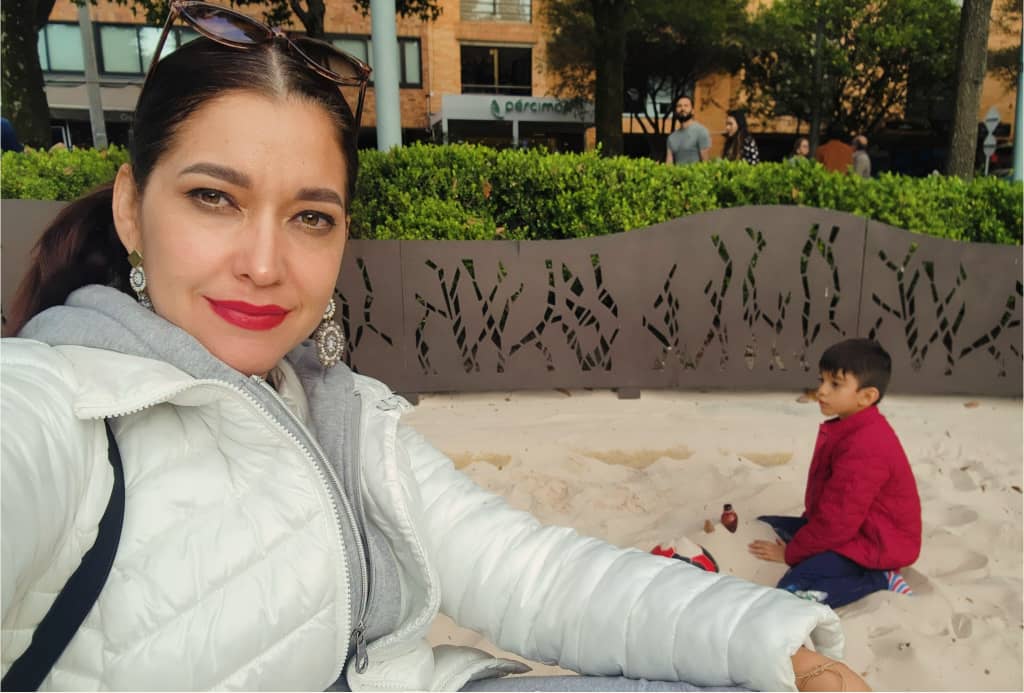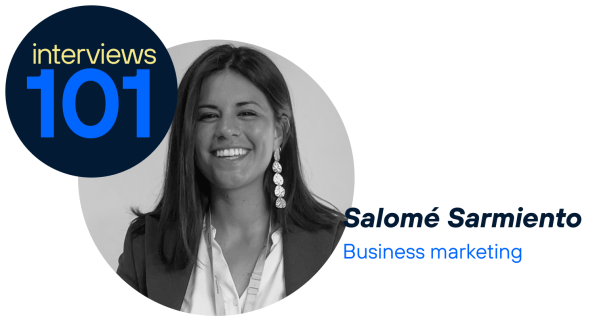Work-life balance
Balancing my personal and professional life became my focus. Since then it has required constant planning, patience, analysis, teamwork and prioritisation.
For every working mother the arrival of a child is a big change. I am not giving you new news, only that my change came with a very special gift: “a unique heart”. My son was born with several congenital heart diseases, which in his 6 years of life have required three heart surgeries and several catheterisations, as well as continuous medical check-ups.

Jesus brought into my life the need to set in motion a wonderful project to help me remember who I am, the strength and faith that shape me, and the capacity of the power of love to transform what we believe to be impossible. All this to understand that I can combine my intelligence and my learning for a higher purpose: to be able to enjoy the love of my prince and my family, without having to sacrifice or miss out on my professional career or on being a woman.
In this article I want to share with you how I have managed to reconcile my professional and personal life using agility. I will tell you the basis of my learning over the last 6 years, and I hope I can help you to free yourself from what you don’t want by prioritising what you do want and understanding that in life -which we deserve to enjoy- everything has a space that depends on you.
Agile method
In 2016, when I started to study agile, more than its methodologies, I got hooked on its values. The fact that to be agile, according to the Manifesto for Agile Software Development 2006, we had to:
- Put people and interactions above processes and tools.
- Making things work (SW/HW) over and above excessive documentation.
- Encourage collaboration with the client over and above contractual negotiations.
- Always have answers to change over following a plan.
All of this reflects what I believe my brand as a Telefónica employee should be. By understanding these agile values, no one had to force me to want to continue learning about the principles and methodological aspects, as I was convinced that if I managed to apply them, everything would be achieved. This is how I started my journey in 2016, being in charge of the Digital Processes area.
Labour agility
The first thing I did was to put together the team that would help me in this difficult mission. This was not just any change, but a change of culture, the most difficult of changes when you work for a large company.
These changes require training, communication, establishing principles, priorities, best practices and methodologies. As if that were not enough, it is key to demonstrate at the highest levels that these changes are good for the company with success stories.
To say that there was a resounding and immediate success in everything that was done that first year would not be true, but it did bring about a mental shift in many of us who applied the agile methodology, one that crossed work and personal boundaries.
That is my case. By taking on an agile way of working I evolved my way of being and thinking. I increased my commitment and productivity, which also allowed me to face several changes in my personal and professional life, which before would hardly have gone hand in hand.
How to use agile values to achieve work-life balance?
- Put people and interactions above processes and tools. This means that the customer, the employees and our loved ones are above everything else. For that to really happen you have to know, listen and understand them, not out of work or necessity, but out of conviction. Key: Put yourself in the other person’s shoes.
- Make things work (SW/HW) over excessive documentation. This guideline is very difficult to internalise and materialise in a company, because that is what we live by. Documentations give us support and security. However, we can make them simple and work hand in hand with the legal and finance departments, mainly, to make them on the fly without interrupting the development and implementation process.
- In the personal sphere, documentation is often verbal and its main dilator is often our EGO. Yes, you can put the EGO aside. That inner ME that always wants to be right and to fight it you must put LOVE at the centre. Key: Listen to each other as clients/family and get the best solution for both parties.
- Encourage collaboration with the customer over negotiation. The leader who still believes he can grow by being selfish and keeping information to himself is far from being agile. Particularly as a leader, I started to grow when I saw my former collaborators develop. It was touching when several of them came up to me and told me that I was their role model. What a blessing it is to hear a colleague or customer talk like that, to be told that you contributed to their evolution, because you supported them when they needed it most.
Collaborating with a client, putting yourself in their shoes, can make them recommend you as a company or as a person. That is very important, but making that recommendation last over time is essential. Key: institutionalise collaboration, form teams that make customers happy and support the performance of other collaborators.
Ultimately, the only constant in this life is change. We must take risks, without fear of making mistakes. Have you ever wondered if you are one of those leaders who allow your team to make mistakes? Are you not afraid to learn from your mistakes? Do you allow this to happen on a personal level? Key: if you want to innovate, you must applaud mistakes. If you only do what you can do, you will never be more than you are. You will not fulfil your destiny until you forget the illusion of control.
I don’t know if my experiences will help resolve any personal issues or if they invite you to read more about agility. What I do want to leave you as a sincere gift is my testimony that agility is an art. As with any art, it is hard work and learning, and of course, it is perfected.
I in particular have managed to do twice as much of my professional and personal work with the same amount of time and, in some cases, less time than usual. I have embraced uncertainty, creativity, collaboration and prioritisation, and I have studied to give structure to my learning processes. I always evaluate what I develop, how I did it and how I communicate it to those involved. For me, what is most valuable is the teamwork and the satisfaction of seeing the culmination of what we started by creating together.
Like ME, you can get organised, increase your speed, quality of work and quality of life.









